Lecture 11 - Neurotransmitters - NeuroBio
1/36
Earn XP
Description and Tags
This is lecture 11 stuff from the slides I should know for neurobiology
Name | Mastery | Learn | Test | Matching | Spaced |
|---|
No study sessions yet.
37 Terms
What is a typical 2-AG release like?
2AG is a retroneurotransmitter that will be released by the POSTSYNAPTIC cell.
It is considered a lipid and diffuses
basically 2ag is going backwards!
Typical — goes from PRESYNAPTIC to POSTSNAPTIC
has vesicular release
Acetylcholine is made from…
Acetyl CoA and Choline by CHOLINE ACETYLTRANSFERASE
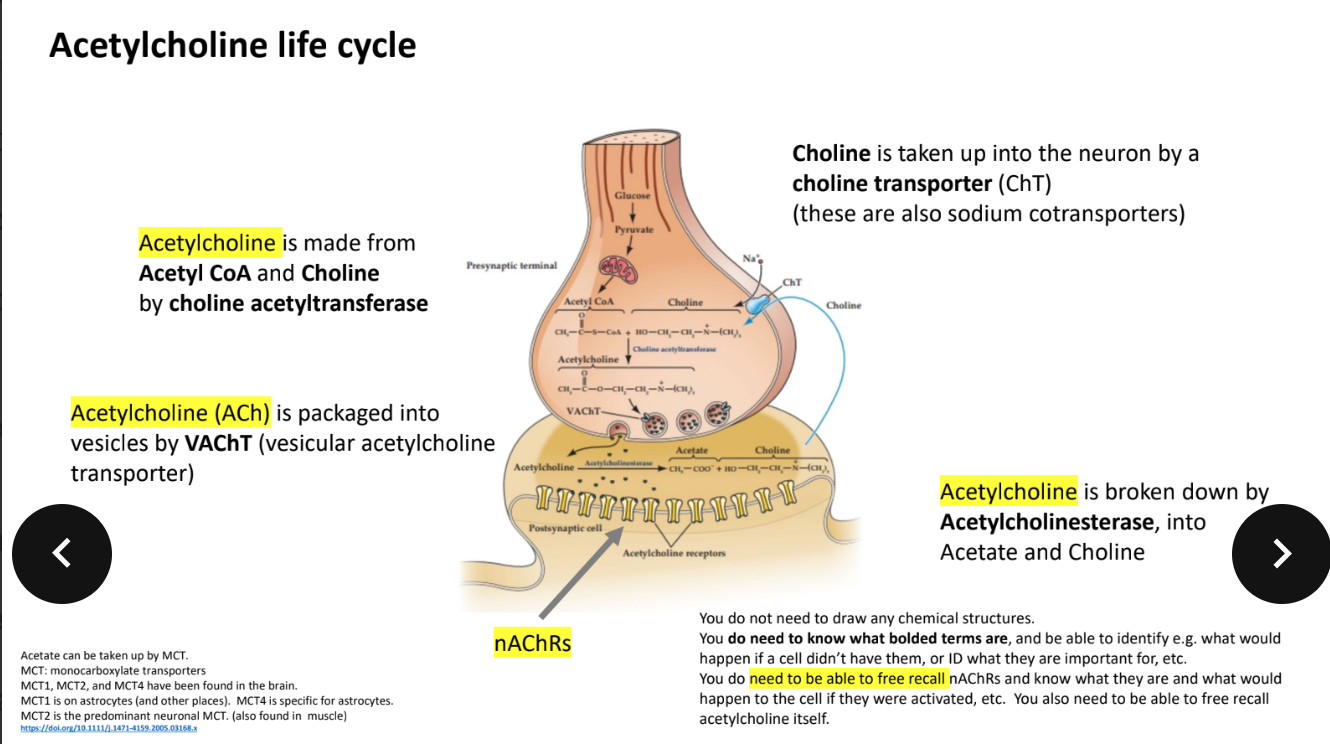
Acetylcholine (ACh) is packaged into vesicles by..
VAChT
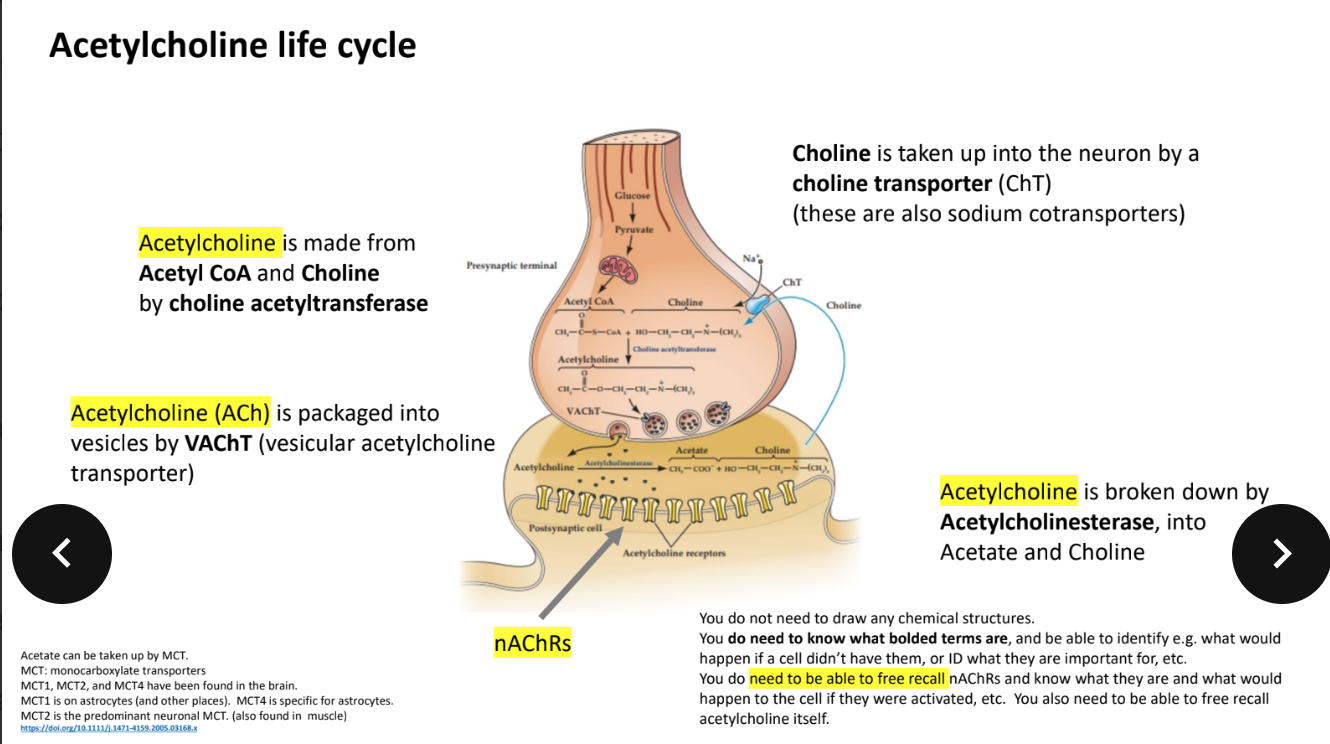
Acetylcholine is broken down by…
Acetylcholinesterase
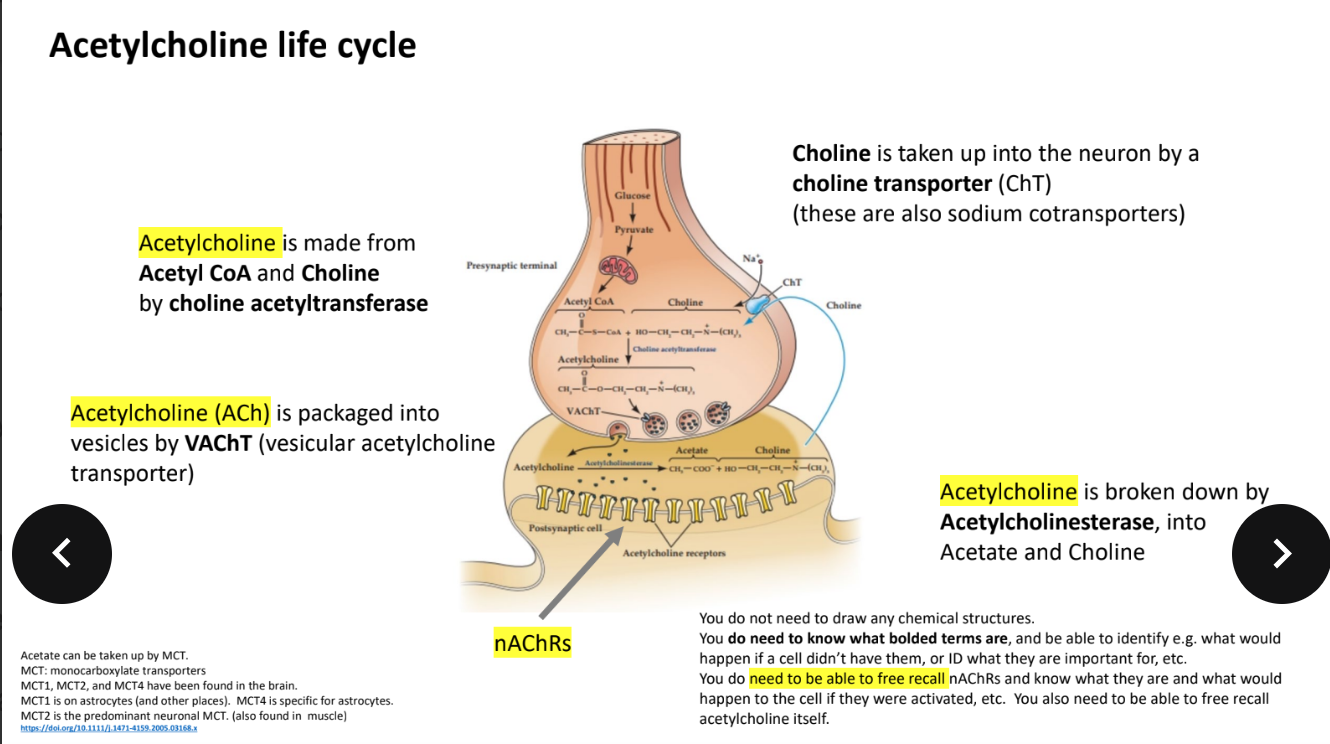
AMPA receptors pass more than just sodium! But the net effect is still.. What do AMPA channels not pass?
Depolarization
AMPA channels do not pass CALCIUM
Glutamate Receptors: What is ionotropic? What are some examples of ionotropic CHANNELS
An ionotropic receptor is a type of transmembrane receptor that directly forms an ion channel, which opens when a specific ligand (such as a neurotransmitter) binds to it, allowing ions to pass through the membrane and create a rapid ionic current in the postsynaptic neuron
AMPA/KA and NMDA
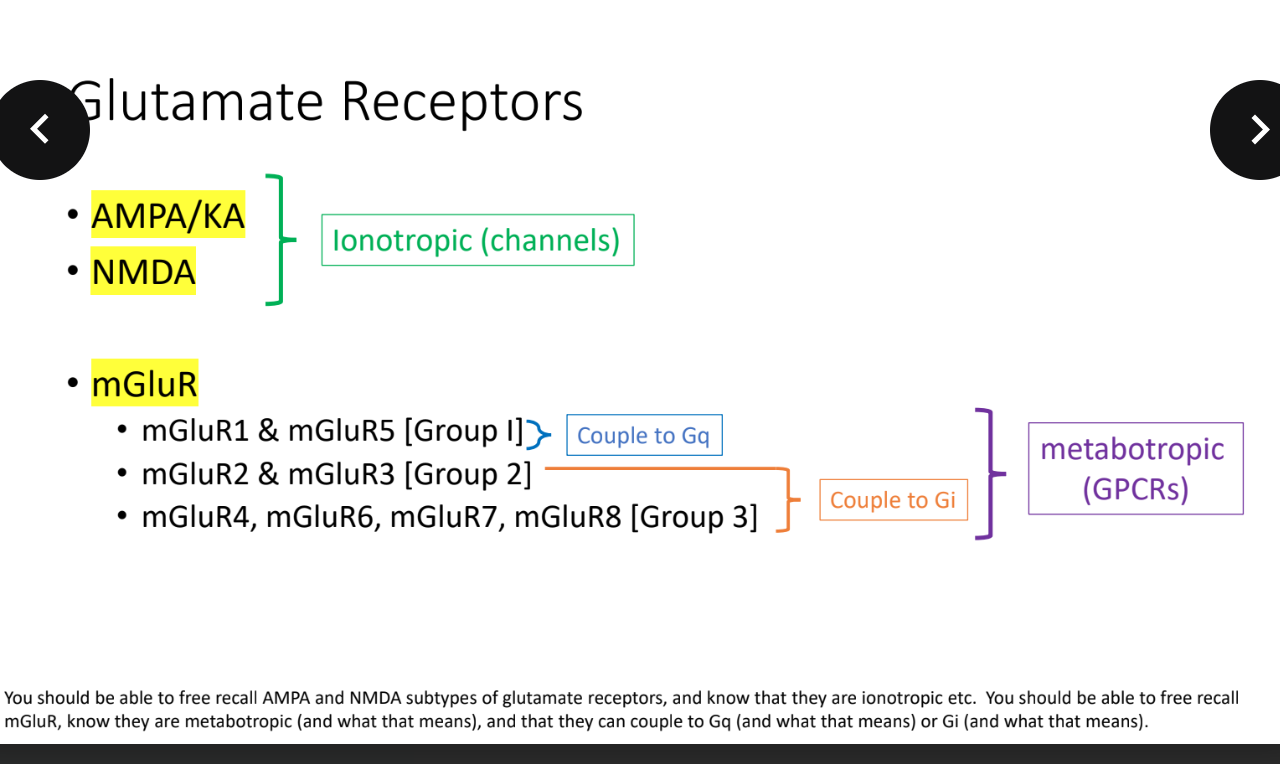
Glutamate receptors: What is metabotropic? What are examples of METABOTROPIC GPCRs
A metabotropic receptor is a type of cell membrane receptor that, upon binding to a neurotransmitter, triggers a series of intracellular signaling pathways rather than directly opening an ion channel.
mGluR1 and mGluR5 — Couples to Gq
mGluR2 and mGluR3
mGluR4 and mGluR6
mGluR7 and mGlueR8
These 3 groups couple to Gi
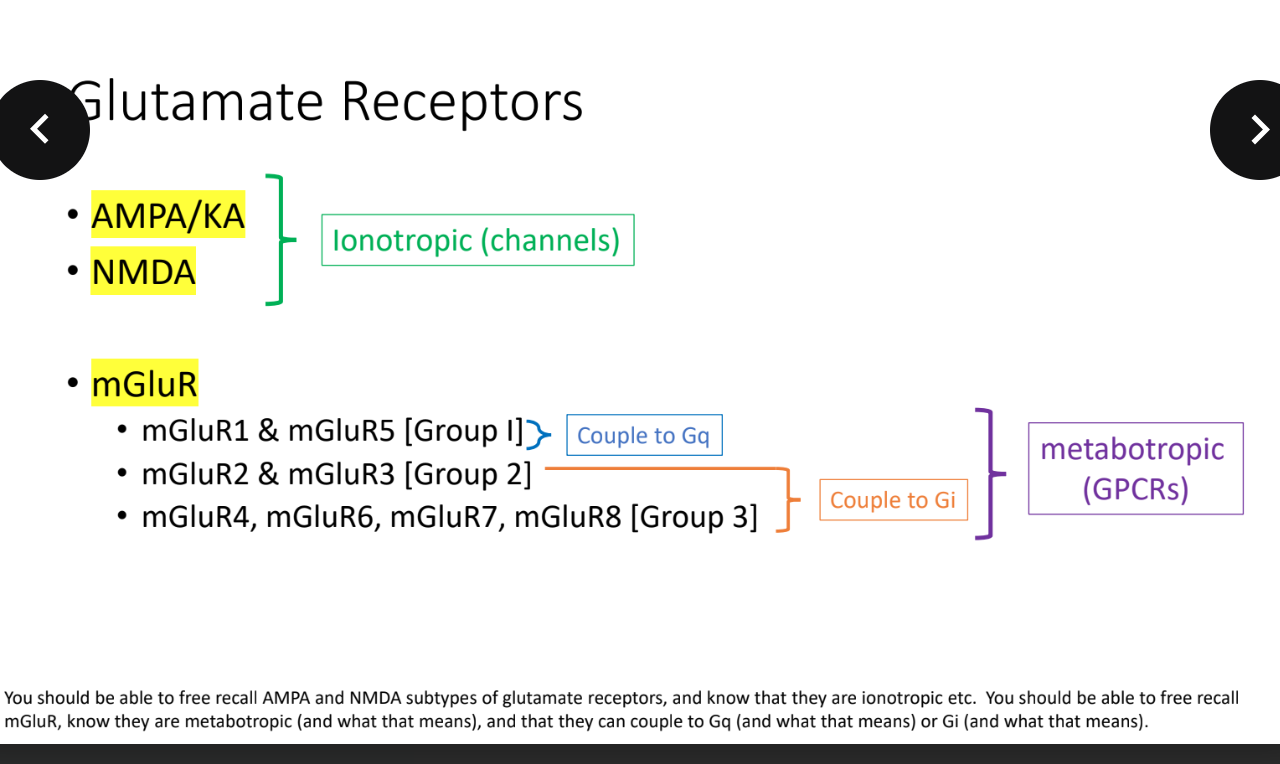
When can AMPA channels pass calcium?
AMPA receptors pass Ca²⁺ only if they lack GluA2 or contain the unedited GluA2(Q) subunit.
Normally, GluA2 is RNA-edited (Q → R by ADAR2), and this blocks Ca²⁺ entry.
Thus:
GluA2(R) → Ca²⁺ impermeable
GluA2(Q) or no GluA2 → Ca²⁺ permeable
Ca²⁺-permeable AMPA receptors = important for plasticity, learning, and disease
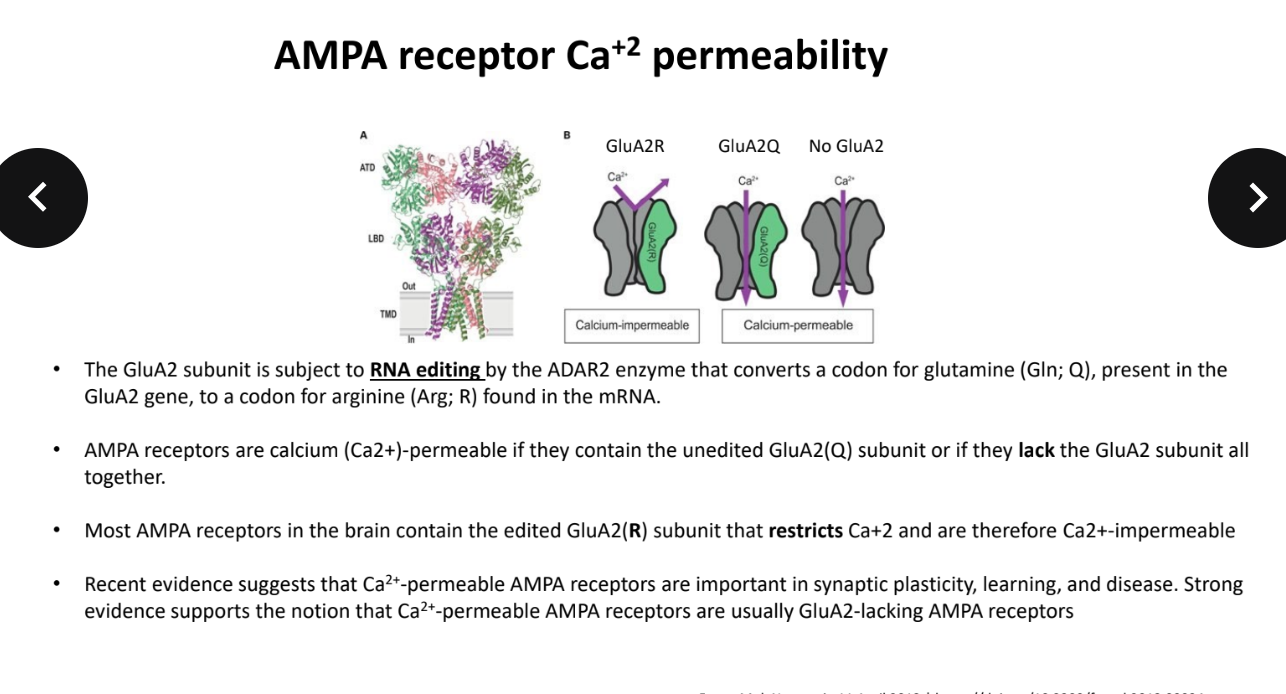
How are NMDA receptors special when compared to AMPA?
NMDA receptors are “coincidence detectors” — they require both glutamate binding and the cell to already be depolarized to open. Unlike most AMPA receptors, NMDA receptors also allow Ca²⁺ to enter, in addition to Na⁺ and K⁺. This Ca²⁺ entry acts as a signal for synaptic plasticity (learning and memory).
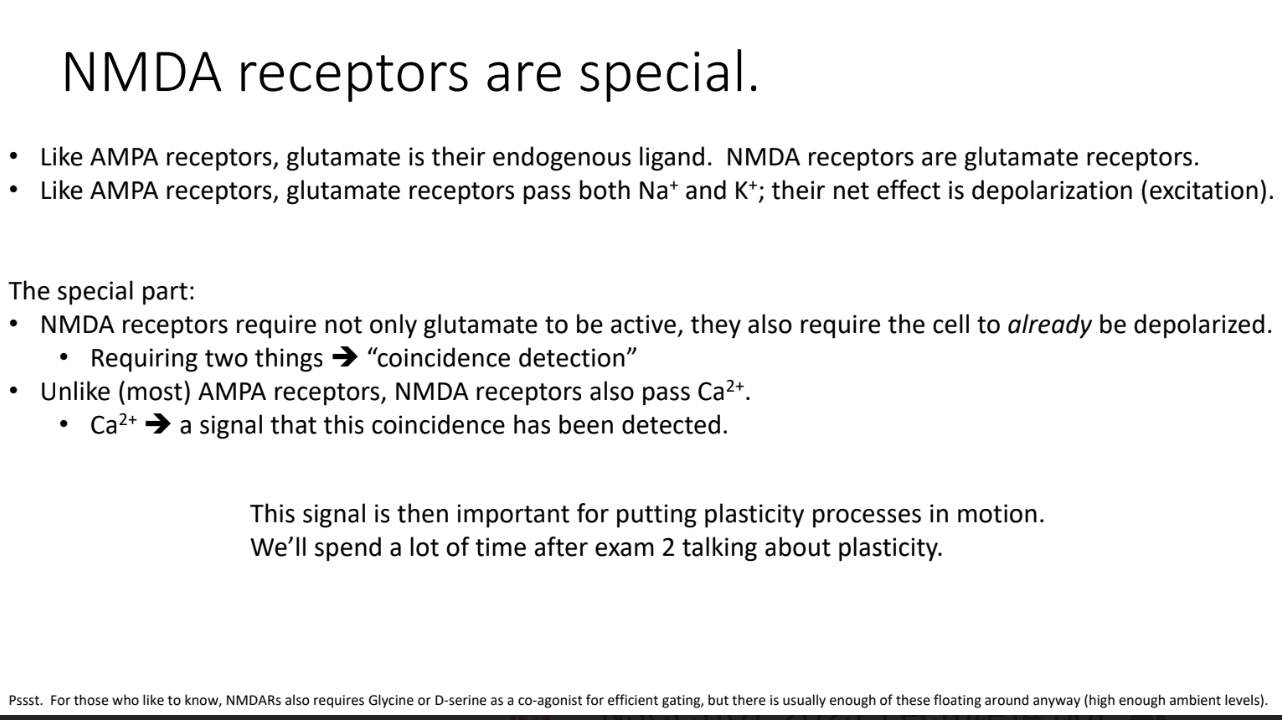
What blocks the pore of the NMDA receptor?
Magensium which blocks entry of ions
What blocks NMDA receptors?
APV which is a drug that blocks NMDA receptors without blocking AMPA.
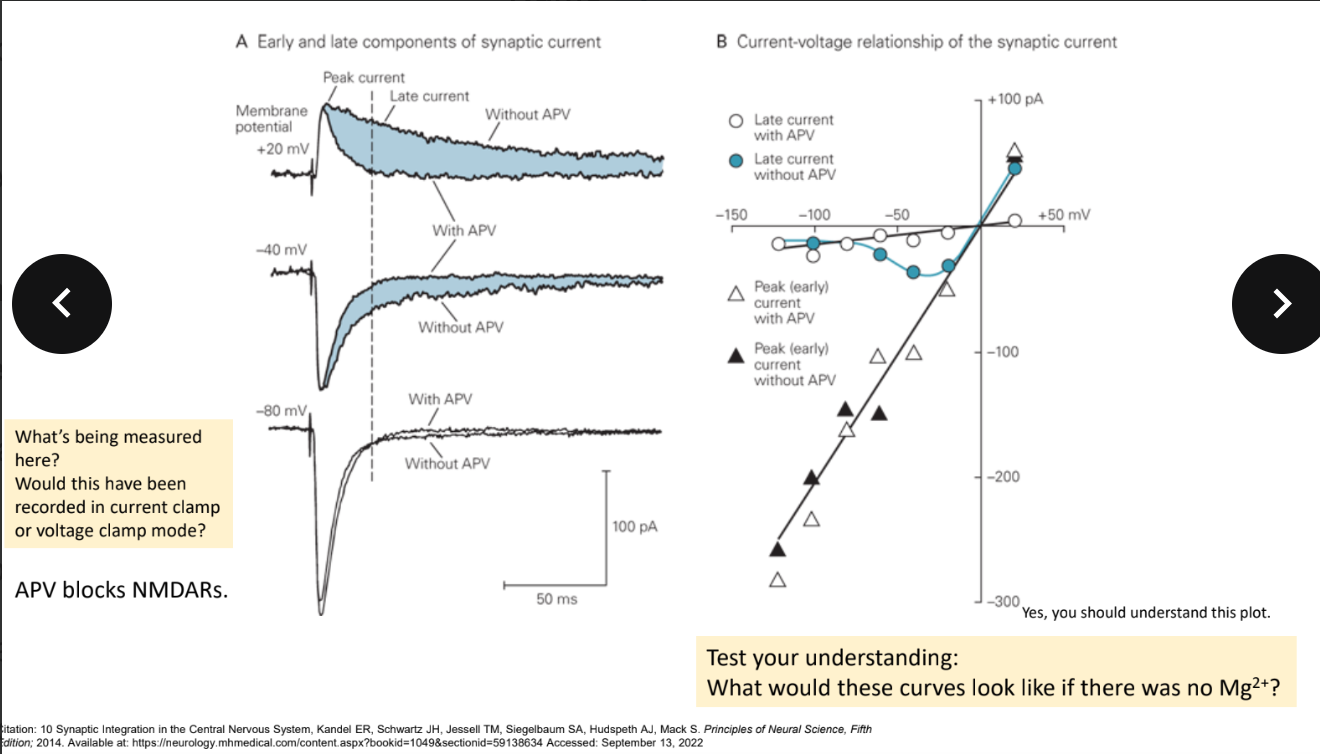
What are silent synapses?
Silent synapses are immature synapses (or those after LTD) that have only NMDA receptors and no AMPA receptors. Because NMDA receptors need depolarization to open, these synapses are inactive at resting potential — hence “silent.” When AMPA receptors are later inserted, the synapse becomes active and can respond during normal neurotransmission.
What are presynaptic mGluRs that couple to Gi?
Presynaptic metabotropic glutamate receptors (mGluRs) that couple to Gi proteins inhibit neurotransmitter release. When activated, Gi signaling reduces Ca²⁺ channel activity in the presynaptic terminal, leading to less Ca²⁺ influx, decreased vesicle fusion, and therefore less neurotransmitter release. This results in a weaker postsynaptic response.
Glutamate life cycle: Glutamine is converted into…by… in the neuron.
GLUTAMATE by GLUTAMINASE
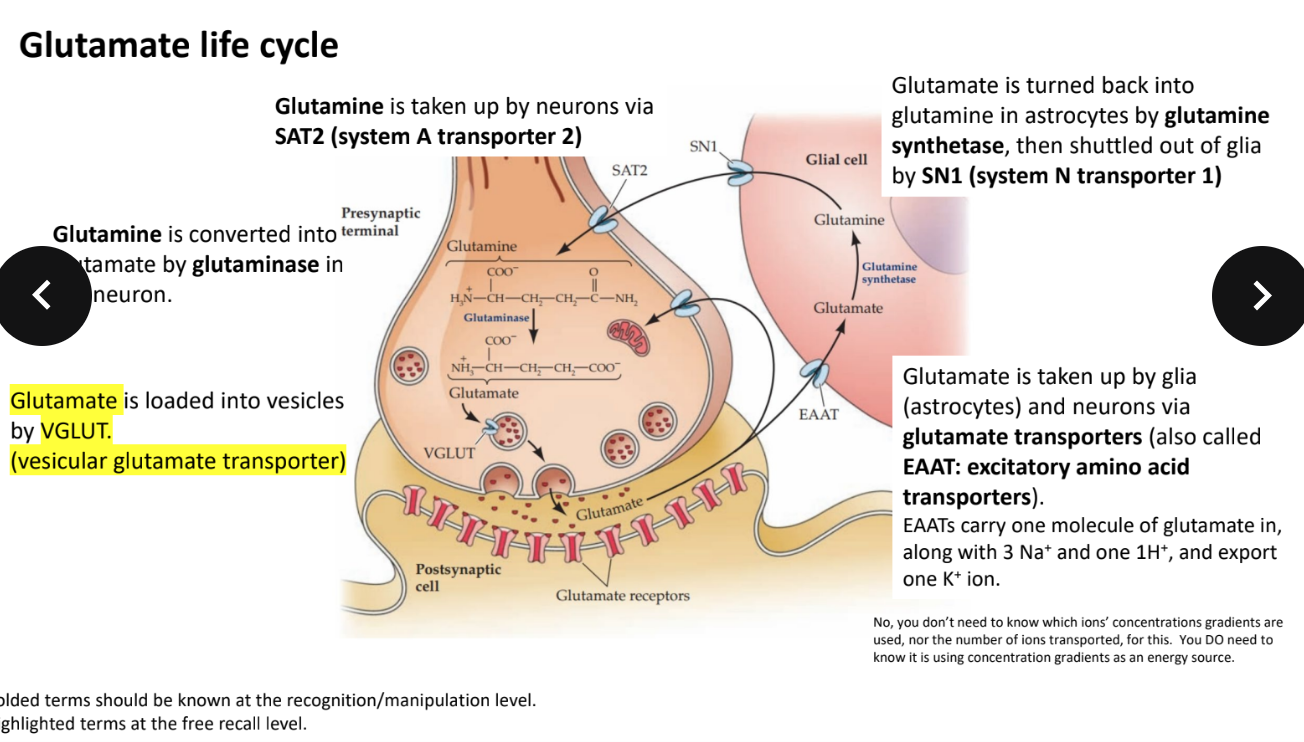
Glutamate is loaded into vesicles by…
VGLUT (vesicular glutamate transporter)
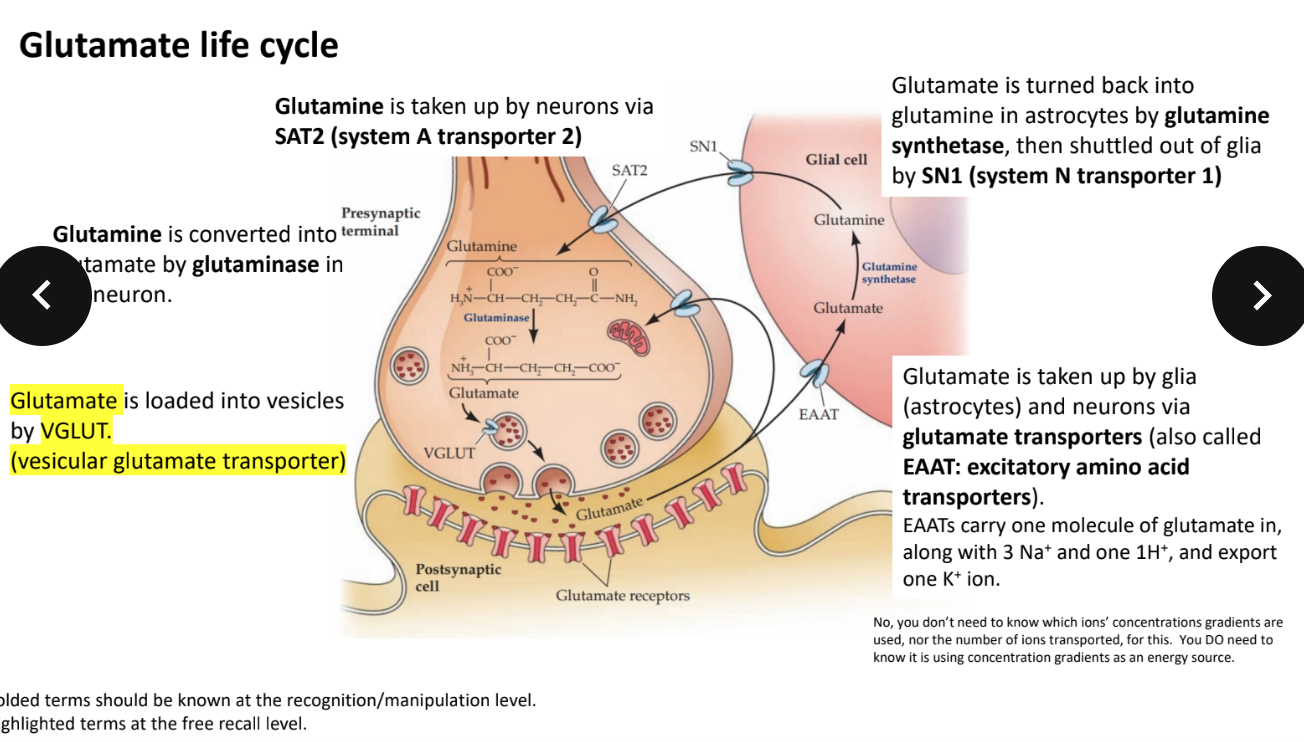
Glutamate is turned back into glutamine in astrocytes by…then shuttled out of glia by..
Glutamine synthetase then shuttled out by.. SN1 (system N transporter 1)
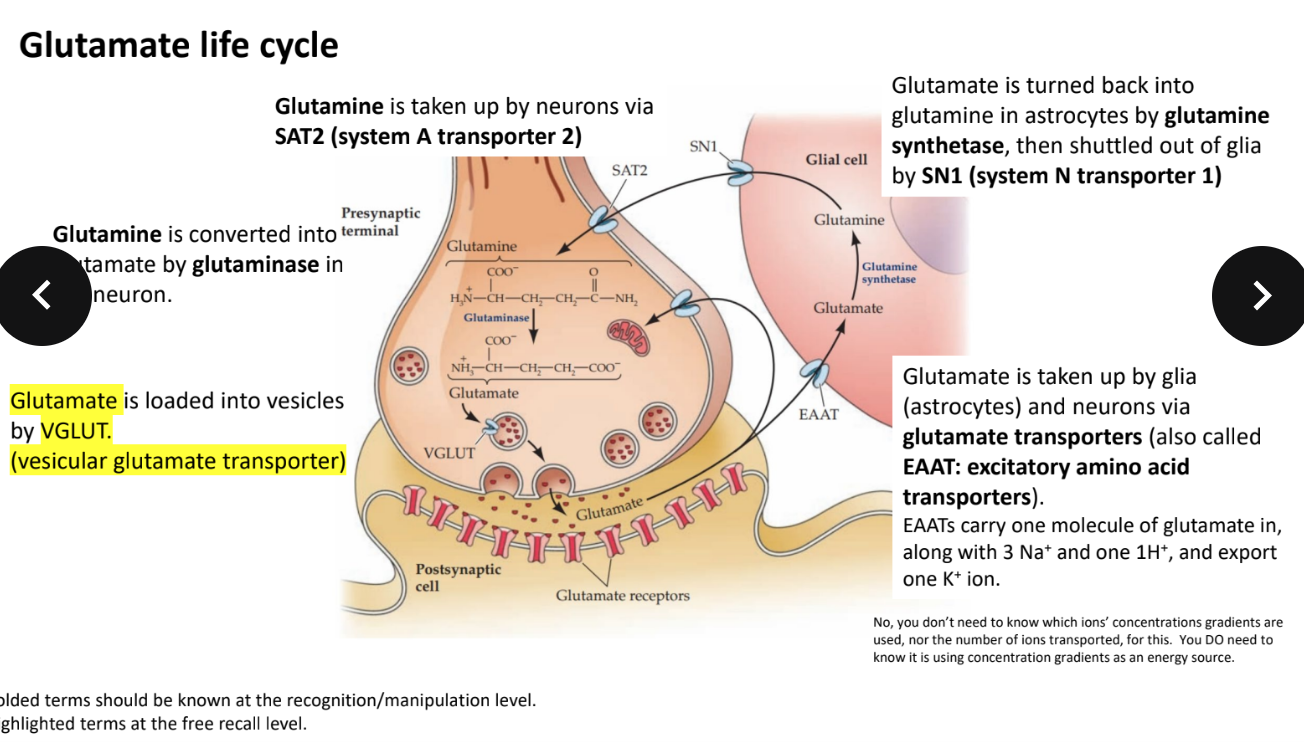
Glutamate is taken up by glia (astrocytes) and neurons via…
Glutamate transporters (also called EAAT: excitatory amino acid transporters).
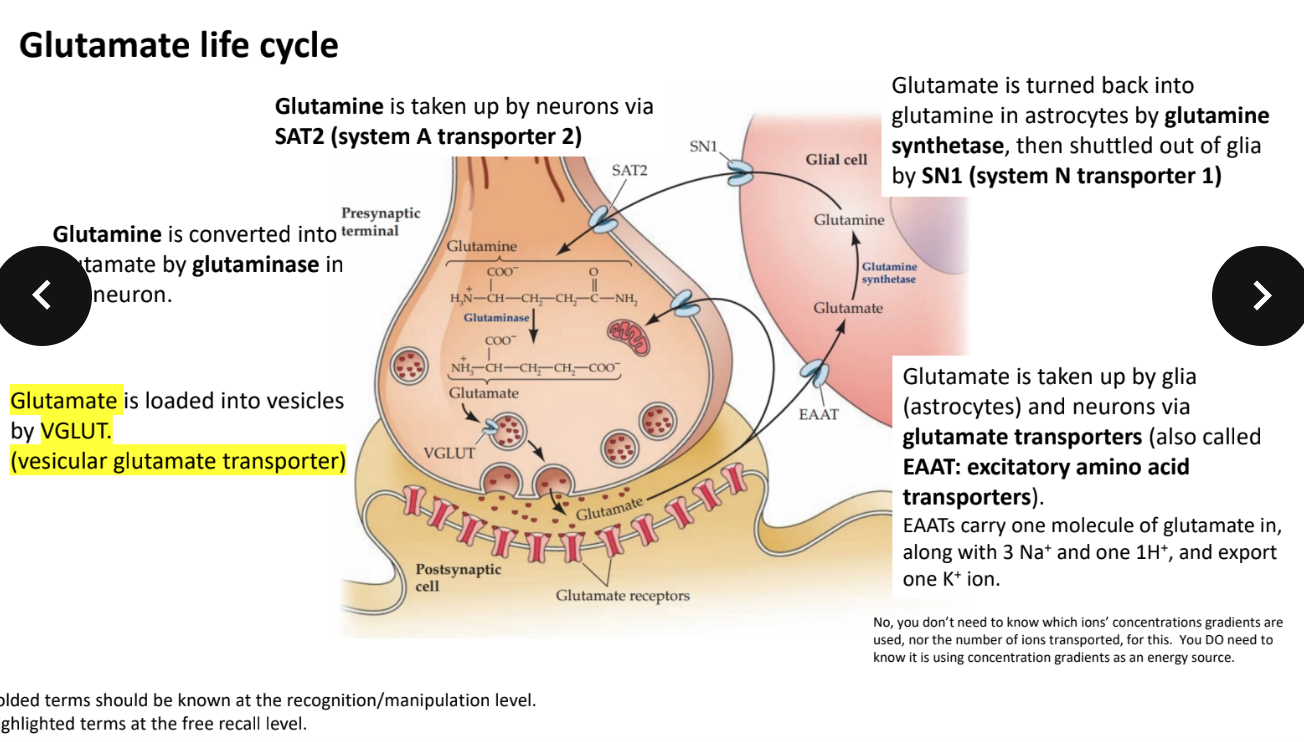
How is glutamine taken up by neurons?
via SAT2 (system A transporter 2)
most projection neurons are
glutamateric
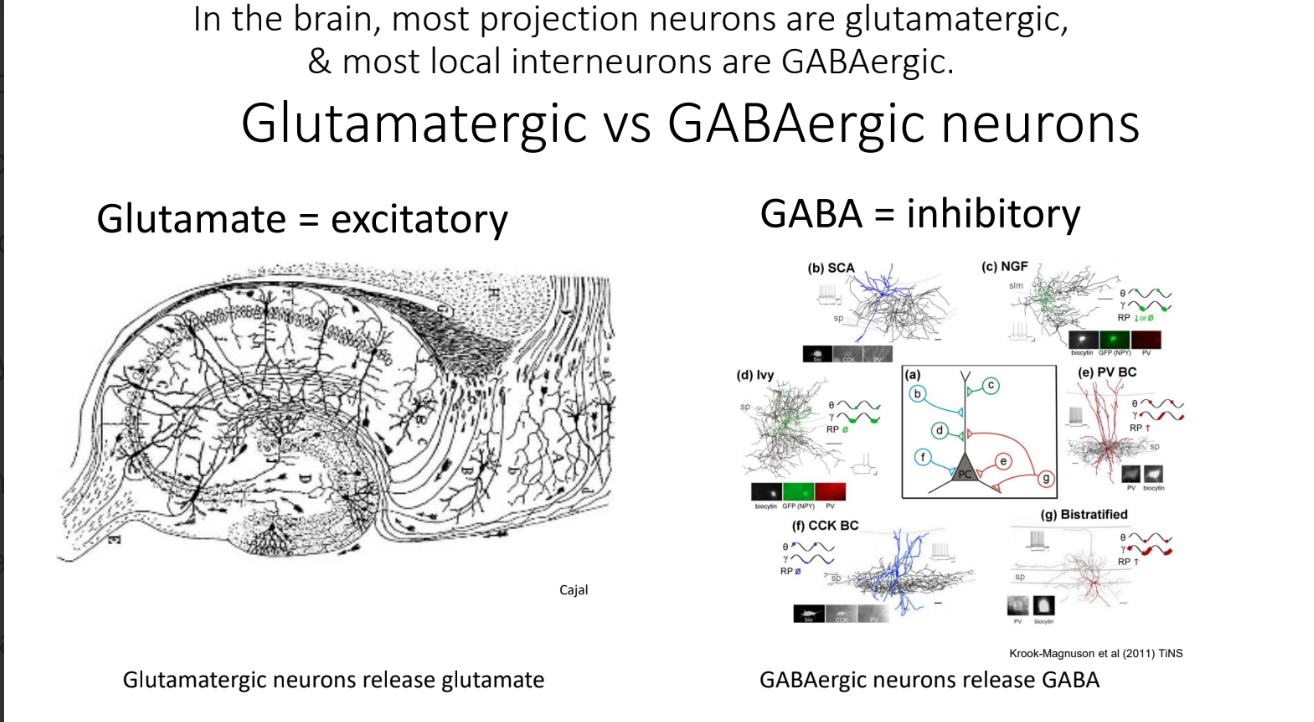
Most local interneurons are
GABAergic
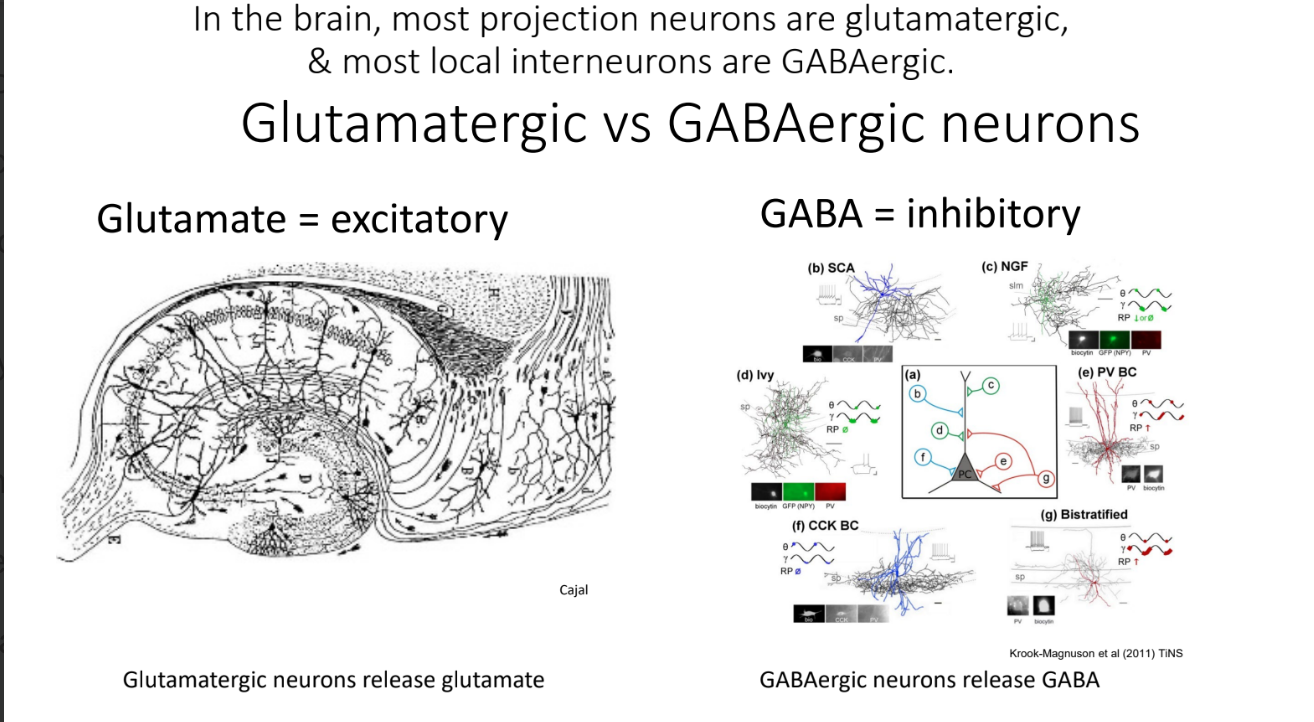
What projection neurons are GABAergic?
Purkinjie cell
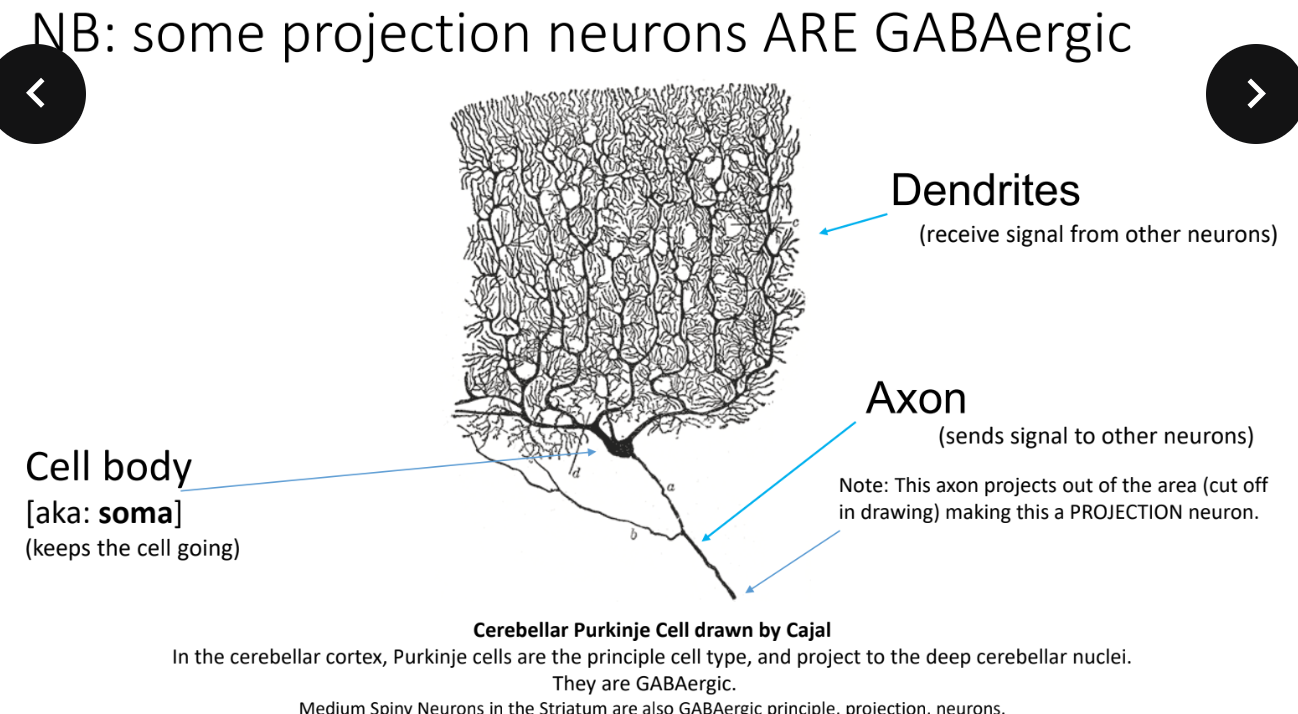
What is GABA synthesized from?
Glutamate, which loses its carboxyl group to become GABA through the enzyme glutamic acid decarboxylase (GAD), with pyridoxal phosphate (vitamin B6) as a cofactor.
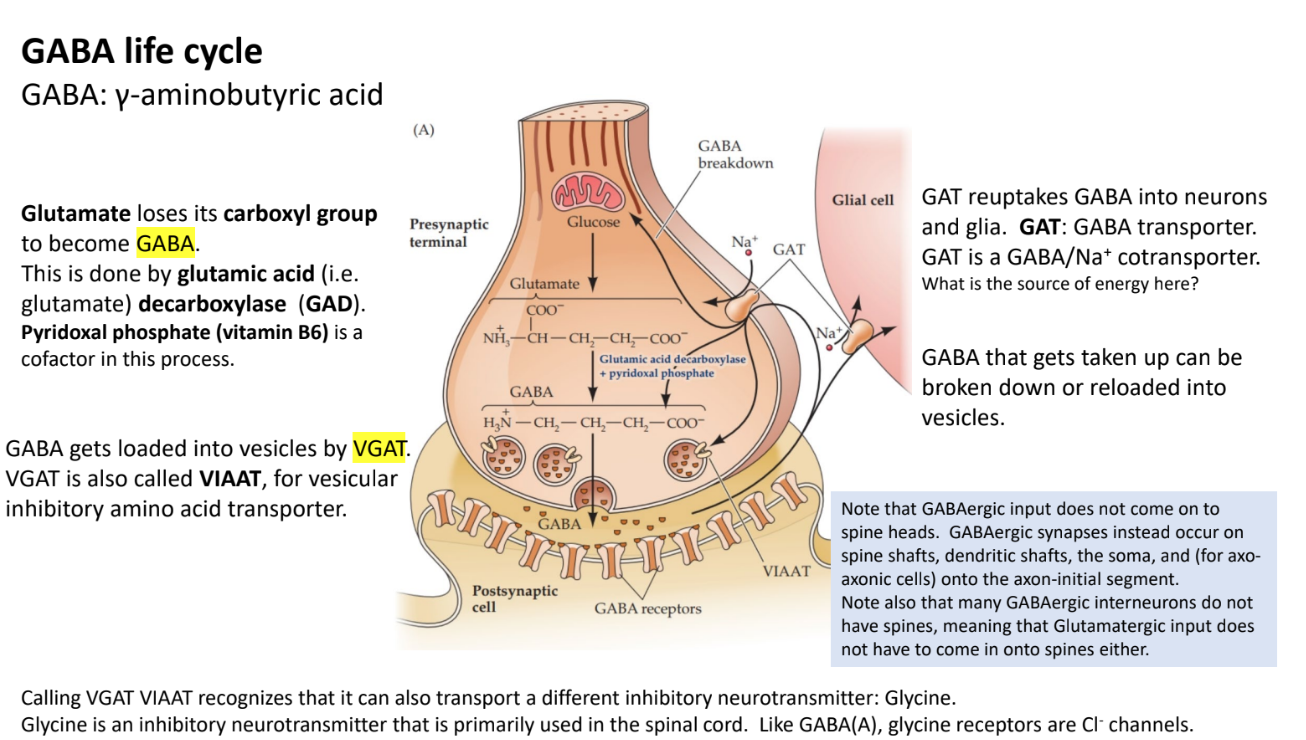
What enzyme converts glutamate to GABA?
Glutamic acid decarboxylase (GAD), using vitamin B6 (pyridoxal phosphate) as a cofactor.
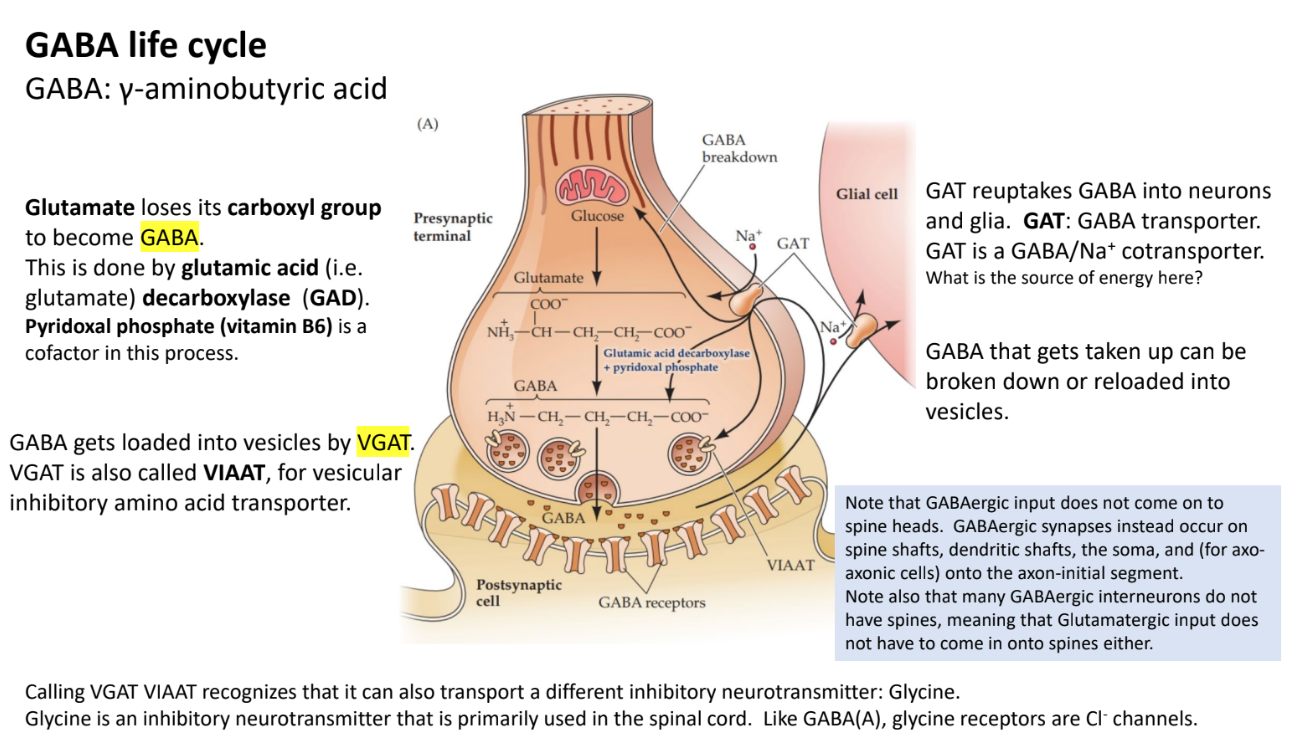
How is GABA loaded into vesicles?
By VGAT (Vesicular GABA Transporter), also called VIAAT (Vesicular Inhibitory Amino Acid Transporter).
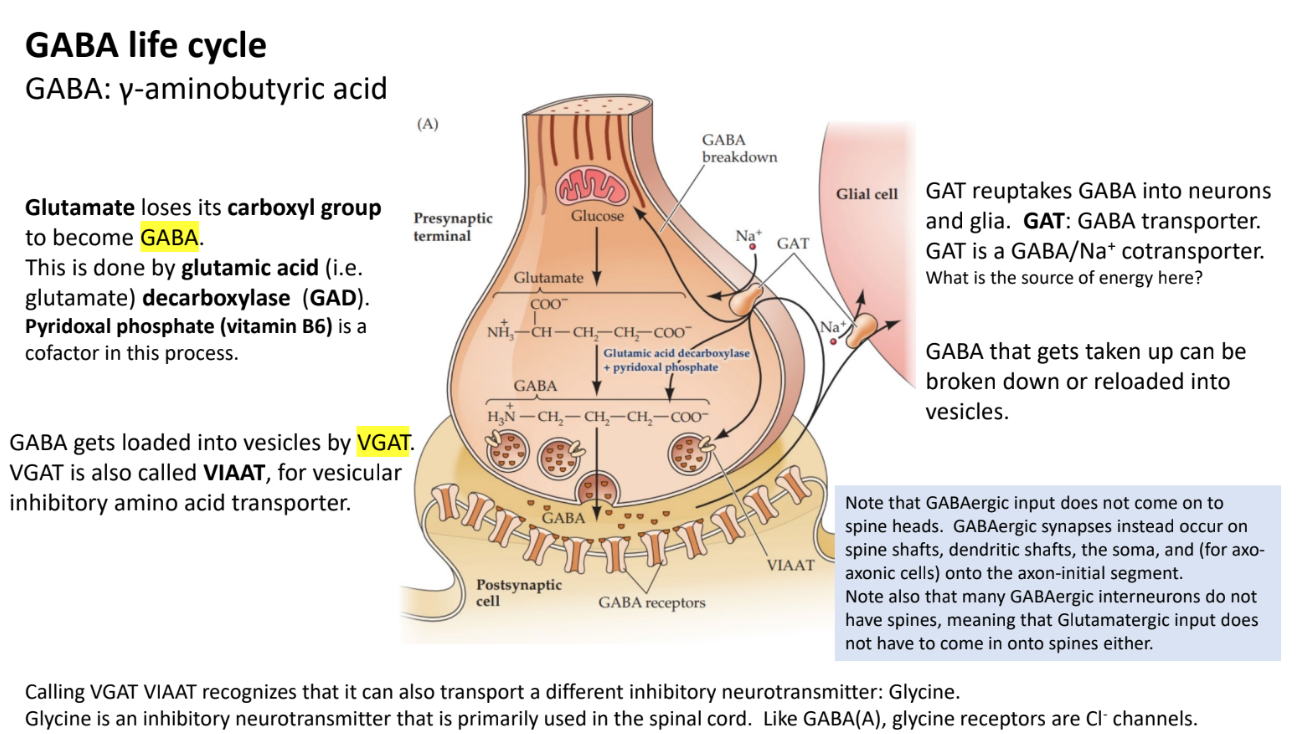
How is GABA cleared from the synaptic cleft?
By GAT (GABA Transporter), which reuptakes GABA into neurons and glia using a GABA/Na⁺ cotransport mechanism.
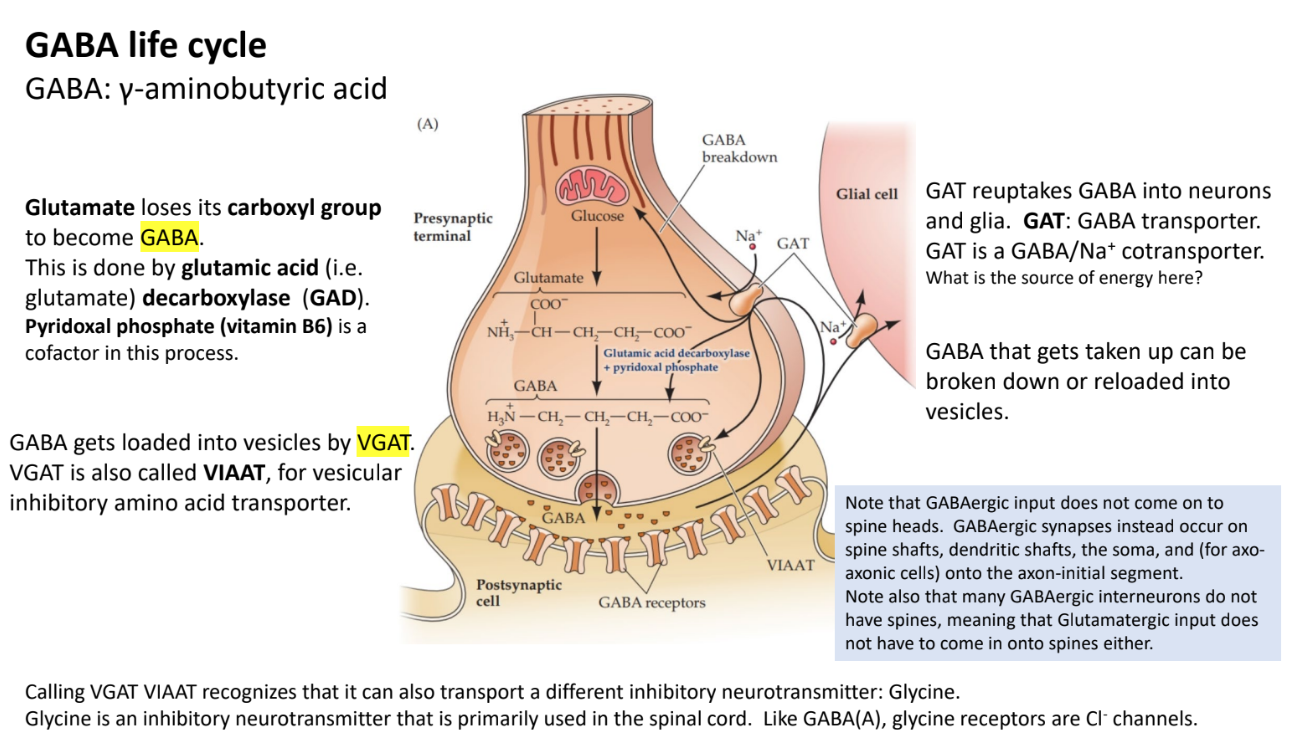
What happens to GABA after reuptake?
It can be broken down or repackaged into vesicles for reuse.
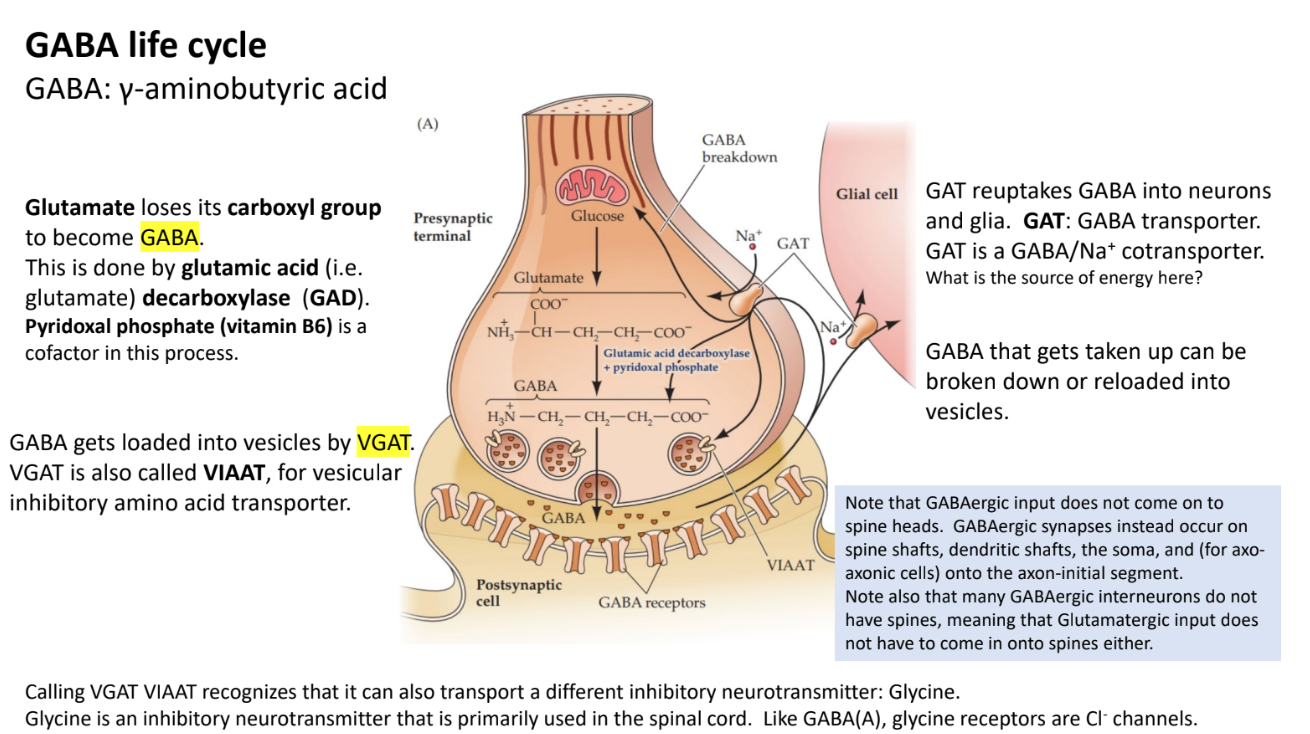
GABAergic input comes onto neurons at the spine head ? (T/F)
False, comes onto the spinal neck typically, excitatory input tends to come into spinal heads
GABA(A): what r they?
Ligand gated chlorine channels and inhibitory neurotransmitter
GABA(B): what r they?
GPCR - G-protein coupled receptor
Why does GABA cause depolarization in immature neurons but hyperpolarization in mature neurons?
Immature neurons express NKCC1, which brings Na⁺, K⁺, and 2 Cl⁻ into the cell → high intracellular Cl⁻.
When GABA opens Cl⁻ channels, Cl⁻ leaves the cell → depolarization (excitatory).
Mature neurons express KCC2, which transports K⁺ and Cl⁻ out of the cell → low intracellular Cl⁻.
When GABA opens Cl⁻ channels, Cl⁻ enters the cell → hyperpolarization (inhibitory).
🧠 Key idea: The shift from NKCC1 → KCC2 expression changes GABA’s effect from excitatory to inhibitory during brain development.
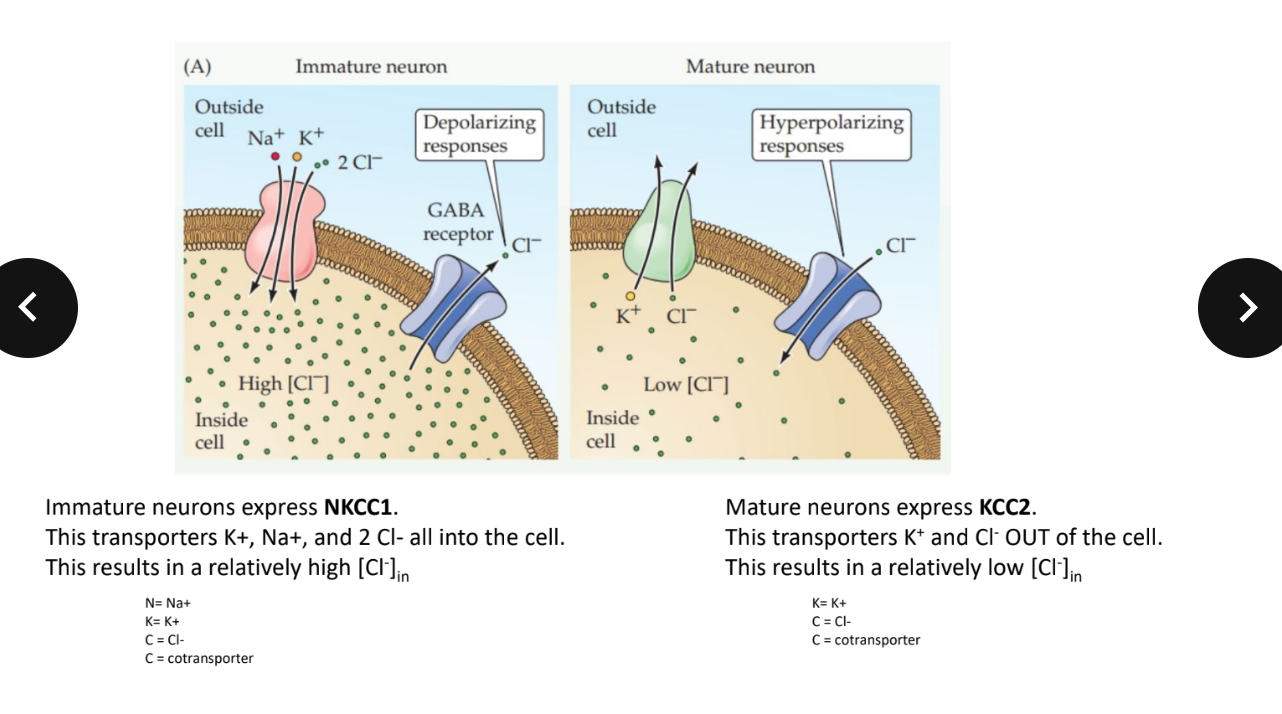
What type of receptor is GABA(B), and how does it work?
GABA(B) receptors are metabotropic (G-protein-coupled) receptors made of two subunits (GABA(B1) + GABA(B2)).
They couple to Gi/o G-proteins, which inhibit adenylyl cyclase and trigger internal signaling.
Effects include:
Activating GIRK channels → K⁺ leaves cell → hyperpolarization (inhibition).
Inhibiting voltage-gated Ca²⁺ channels → decreased neurotransmitter release (especially presynaptically).
Their inhibitory effect is slower than GABA(A) because it works through G-proteins (~150 ms delay).
Glycine life cycle: is it inhibitory or excitatory?Is it iontropic or metabotropic? what type of channels does it use? Packaged into vesicles by what?
Inhibitory, iontropic, ligand gated chloride channels are utilized, VIAAT does the packing
What type of receptor are muscarinic acetylcholine receptors (mAChRs)?
They are metabotropic GPCRs that activate intracellular signaling pathways through G-proteins.
How many subtypes of mAChRs exist, and how are they grouped?
There are five types (M₁–M₅):
Odd-numbered (M₁, M₃, M₅) → couple to Gq
Even-numbered (M₂, M₄) → couple to Gi
What happens when mAChRs couple to Gq (M₁, M₃, M₅)?
Activate phospholipase C (PLC) → produces IP₃ and DAG
Increases Ca²⁺ release and protein phosphorylation
Can inhibit KCNQ (K⁺) channels, leading to depolarization
What happens when mAChRs couple to Gi (M₂, M₄)?
Activate GIRK channels → K⁺ leaves cell → hyperpolarization
Inhibit voltage-gated Ca²⁺ channels → reduces neurotransmitter release
What’s the overall difference between Gq- and Gi-coupled mAChRs?
Gq-coupled (M₁, M₃, M₅) → Excitatory effects (↑ Ca²⁺, depolarization)
Gi-coupled (M₂, M₄) → Inhibitory effects (↓ Ca²⁺, hyperpolarization)